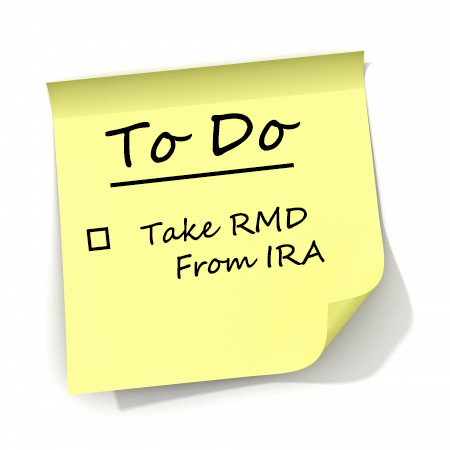
You may be wondering why we decided to write a whole blog about Required Minimum Distributions, or RMDS. The short answer – it’s expensive NOT to understand RMDs. If you forget to withdraw your RMD by the deadline, the IRS may penalize you 50% of the amount that your actual distribution falls short of your required amount. This penalty is in addition to the taxes you’ll owe on the remainder of your RMD.
So where are RMDs generated from in the first place? Let’s begin by taking a look at qualified retirement accounts, which are excellent tools for deferring taxes on your income. Pre-tax retirement contributions are not taxable in the year they’re deposited, and they grow tax-deferred until you withdraw them in retirement. However, as we well know, there is no free lunch, and those dollars cannot stay in your tax-deferred retirement account forever.
First and foremost, once you’ve met the requirements for a qualified withdrawal, such as reaching age 59½, you can draw as much as you’d like out of your retirement accounts without penalty. After all, that’s why you saved those dollars in the first place! If you’re not taking withdrawals, you will need to begin doing so eventually as part of your RMD.
An RMD is a minimum annual amount that you must draw from certain retirement accounts once you reach age 72. Previously, RMDs began at age 70½, but the beginning age was changed to 72 as part of the Setting Every Community Up for Retirement Enhancement (SECURE) Act of 2019. The first RMD is required to be withdrawn by April 1 of the year following the calendar year in which you turn 72. Thereafter, RMDs must be taken by December 31 of each year. If you don’t need your RMD for income, you can certainly reinvest the proceeds in an after-tax account, but you are not exempt from taking an RMD simply because you don’t need more income.
So, which accounts have RMD requirements? Generally, RMDs apply to the following accounts:
- traditional IRAs
- SEP IRAs
- SIMPLE IRAs
- 401(k) plans from prior employers
- 403(b) plans from prior employers
- 457(b) plans from prior employers
- profit sharing plans from prior employers
- other defined contribution plans
Notice that Roth IRAs do not show up on that list. Roth IRAs do not have RMDs for the original owner of the account. However, Roth dollars in an employer-sponsored plan, such as a 401(k) or 403(b), are subject to RMDs, so make sure to rollover any Roth dollars in your employer-sponsored plans to a Roth IRA prior to age 72.
At this point, I’m sure you’re wondering how much you need to withdraw from your retirement account to satisfy your RMD. That depends on the balance in your account at the end of the previous year and your age. Based on your age, the IRS assigns a life expectancy factor from the Uniform Lifetime Table. To calculate your RMD, divide the December 31 balance of your account by the life expectancy factor that corresponds to your age. It’s important to note that the IRS made updates to the table for 2022 RMDs.
For example, if you are 74 in 2022 and have a balance in your Traditional IRA of $200,000 on December 31, 2021, your RMD would be calculated by dividing $200,000 by the life expectancy factor from the Uniform Lifetime Table, which is 25.5 for a 74-year-old. That would result in a 2022 RMD of $7,843.14.
Let’s take a moment to touch on a few special circumstances related to RMDs:
- The Joint Life Expectancy Table: If you list your spouse as the sole beneficiary of your IRA, and he or she is more than 10 years younger than you are, your RMD will be calculated using the Joint Life Expectancy Table rather than the Uniform Lifetime Table.
- Inherited IRAs: If you inherit an IRA, you may be required to begin taking RMDs even if you are not yet 72. Whether or not you need to take an RMD depends on your relationship to the deceased account owner (spousal vs. non-spousal beneficiary) and when you inherited the IRA before or after 2020).
- 2020: RMDs were waived for 2020 due to the Coronavirus Aid, Recovery, and Economic Security (CARES) Act.
- Qualified Charitable Distributions: While not directly related to RMDs, a Qualified Charitable Distribution, or QCD, is a great option if you do not need the income generated by your RMD. QCDs give you the option, once you reach age 70½, to distribute funds from your IRA (up to $100,000 per year) directly to a qualified charity and not pay taxes on the distribution. Keep in mind that you can only perform QCDs out of an IRA, so they cannot be used to satisfy the RMD on your 401(k) or other employer plan. Notice that the beginning date for QCDs did not change to 72 when the required beginning date for RMDs changed from 70½ to 72, meaning that you can take advantage of QCDs even before you must take RMDs.
There is no question that RMDs can be complicated, and mistakes related to them can be costly. The good news is that you don’t need to face them alone! Reach out to your trusted financial planning professional to work through your specific situation so that you can focus on enjoying your retirement and not worrying about how the latest RMD regulations affect your financial life.



